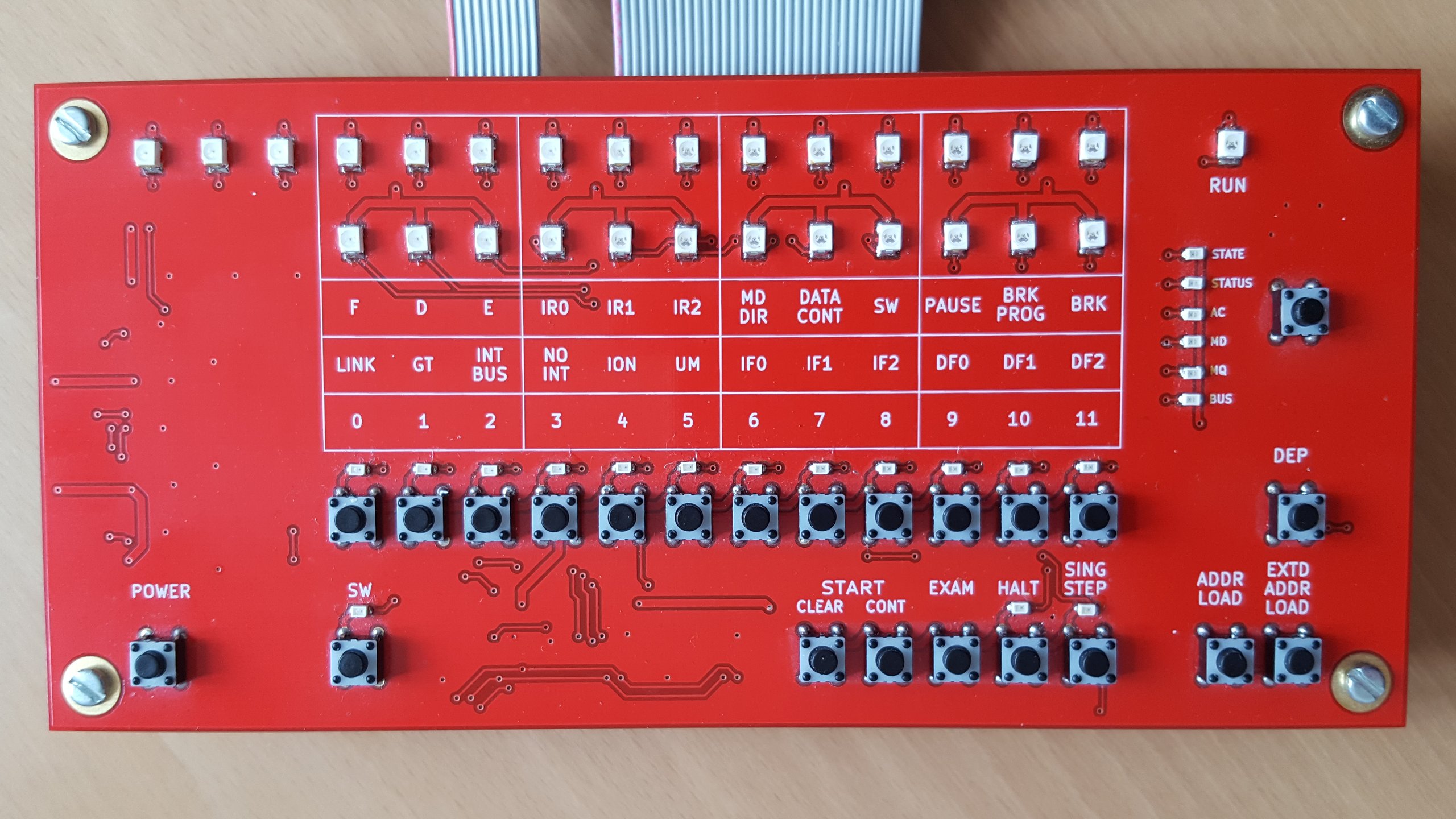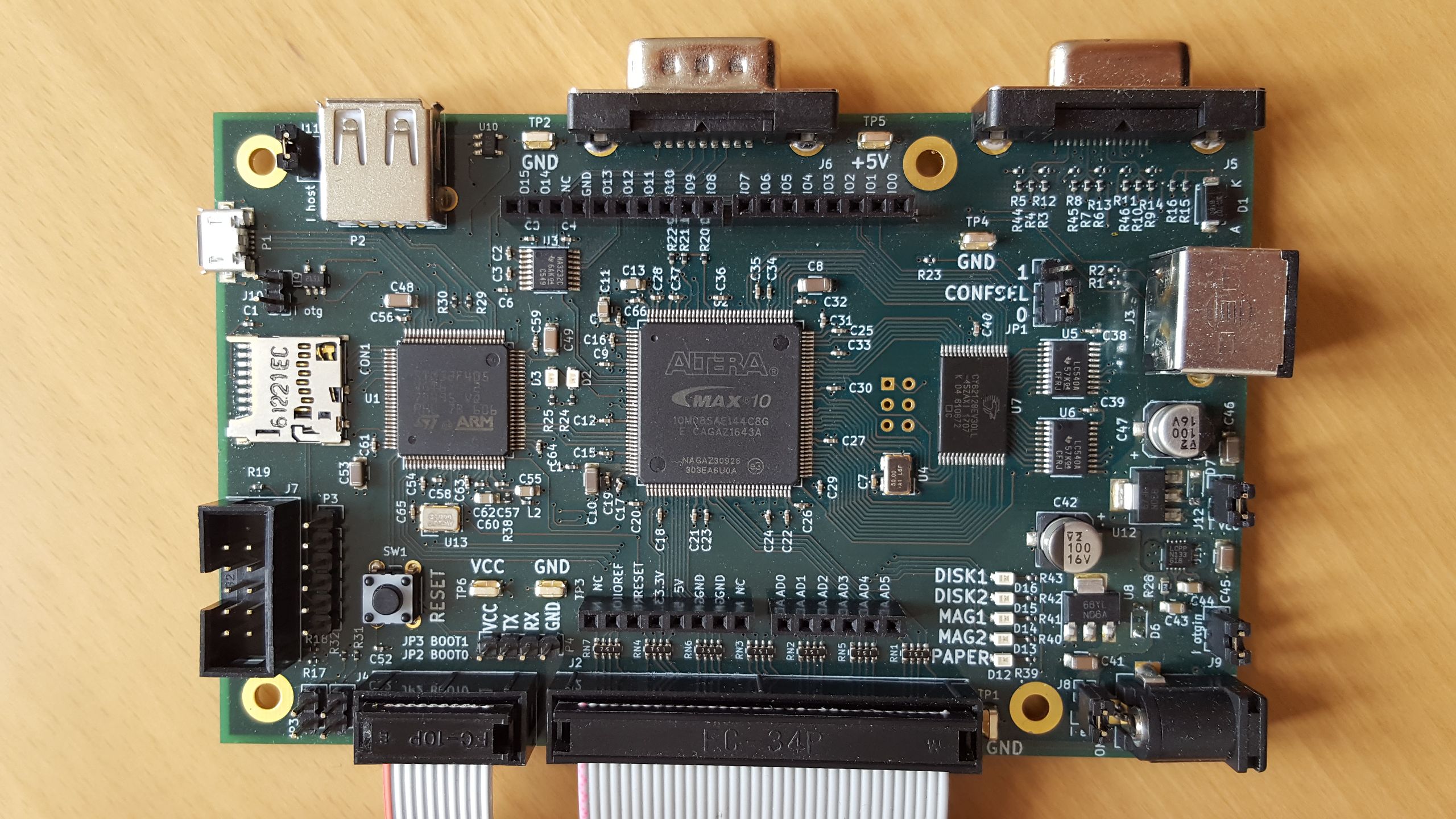

The post continues from the last
post shared.
Let me get some interesting tit-bits not related to the day-trip out-of-the-way first
I don t know whether we had full access to see all parts of fuller hall or not. Couple of days I was wondering around Fuller Hall, specifically next to where clothes were pressed. Came to know of the laundry service pretty late but still was useful. Umm next to where the ladies/gentleman pressed our clothes, there is a stairway which goes down. In fact even on the opposite side there is a stairway which goes down. I dunno if other people explored them or not.

I was surprised and shocked to see bars in each room as well as connecting walkways etc. I felt a bit sad, confused and curious and went on to find more places like that. After a while I came up to the ground-level and enquired with some of the ladies therein. I was shocked to know that UCT some years ago (they were not specific) was a jail for people. I couldn t imagine that a place which has so much warmth (in people, not climate) could be evil in a sense. I was not able to get much information out of them about the nature of jail it was, maybe it is a dark past that nobody wants to open up, dunno. There were also two *important* aspects of UCT which Bernelle either forgot, didn t share or I just came to know via the Wikipedia page then but nothing else.
1.
MeerKAT Apparently quite a bit of the technology was built-in UCT itself. This would have been interesting for geeks and wanna-be geeks like me

2.
The OpenContent Initiative by UCT This would have been also something worth exploring.
One more interesting thing which I saw was the French council in Cape Town from outside

I would urge to look at the picture in the gallery as the picture I shared doesn t really show all the details. For e.g. the typical large french windows which are the hall-mark of French architecture doesn t show its glory but if you look at 1306 2322 original picture instead of the 202 360 reproduction you will see that.
You will also the insignia of the
French Imperial Eagle whose history I came to know only after I looked it up on the Wikipedia page on that day.
It seemed fascinating and probably would have the same pride as the
State Emblem of India has for Indians with the four Asiatic Lions standing in a circle protecting each other.
I also like the palm tree and the way the French Council seemed little and yet had character around all the big buildings.
What also was interesting that there wasn t any scare/fear-build and we could take photos from outside unlike what I had seen and experienced in Doha, Qatar as far as photography near Western Embassies/Councils were concerned.
One of the very eye-opening moments for me was also while I was researching flights from India to South Africa. While perhaps unconsciously I might have known that Middle East is close to India, in reality, it was only during the search I became aware that most places in Middle East by flight are only an hour or two away.
This was shocking as there is virtually no mention of one of our neighbours when they are source of large-scale remittances every year. I mean this should have been in our history and geography books but most do not dwell on the subject. It was only during and after that I could understand Mr. Modi s interactions and trade policies with the Middle East.
Another interesting bit was seeing a bar in a Sprinbok bus

While admittedly it is not the best picture of the bar, I was surprised to find a bar at the back of a bus. By bar I mean a machine which can serve anything from juices to alcoholic drinks depending upon what is stocked. What was also interesting in the same bus is that the bus also had a middle entrance-and-exit.

This is something I hadn t seen in most Indian buses. Some of the Volvo buses have but it is rarely used (only except emergencies) . An exhaustive showcase of local buses can be seen
here . I find the hand-drawn/cad depictions of all the buses by
Amit Pense near to the T.


This is also something which I have not observed in Indian inter-city buses (axe to break the window in case of accident and breakable glass which doesn t hurt anyone I presume), whether they are State-Transport or the high-end Volvo s . Either it s part of South African Roads Regulations or something that Springbok buses do for their customers. All of these queries about the different facets I wanted to ask the bus-driver and the attendant/controller but in the excitement of seeing, recording new things couldn t ask

In fact one of the more interesting things I looked at and could look day and night is the variety of vehicles on display in Cape Town. In hindsight, I should have bought a couple of 128 GB MMC cards for my mobile rather than the 64 GB one. It was just plain inadequate to capture all that was new and interesting.

This truck I had seen about some 100 metres near the Auditorium on Upper Campus. The truck s design, paint was something I had never seen before. It is/was similar to casket trucks seen in movies but the way it was painted and everything made it special.
What was interesting is to see the gamut of different vehicles. For instance, there were no bicycles that I saw in most places. There were mostly Japanese/Italian bikes and all sorts of trucks. If I had known before, I would definitely have bought an SD specifically to take snaps of all the different types of trucks, cars etc. that I saw therein.
The adage/phrase I should stop in any one place and the whole world will pass me by seemed true on quite a few South African Roads. While the roads were on par or a shade better than India, many of those were wide roads. Seeing those, I was left imagining how the
Autobahn in Germany and other high-speed Expressways would look n feel.
India has also been doing that with the
Pune-Mumbai Expressway and projects like
Yamuna Expressway and now the extension
Agra Lucknow Expressway but doing this all over India would take probably a decade or more. We have been doing it since a decade and a half.
NHDP and
PMGSY are two projects which are still ongoing to better the roads. We have been having issues as to should we have toll or no toll issues but that is a discussion for some other time.
One of the more interesting sights I saw was the high-arched gothic-styled church from outside. This is near Longstreet as well.

I have seen something similar in Goa, Pondicherry but not such high-arches. I did try couple of times to gain entry but one time it was closed, the other time some repairing/construction work was going on or something. I would loved to see it from inside and hopefully they would have had an organ (music) as well. I could imagine to some extent the sort of music that would have come out.
Now that Goa has come in the conversation I can t help but state that Seafood enthusiasts/lover/aficionado, or/and Pescatarianism would have a ball of a time in Goa. Goa is on the
Konkan coast and while I m eggie, ones who enjoy seafood really have a ball of a time in Goa. Fouthama s Festival which happens in February is particularly attractive as Goan homes are thrown open for people to come and sample their food, exchange recipes and alike. This happens around 2 weeks before the Goan Carnival and is very much a part of the mish-mashed Konkani-Bengali-Parsi-Portugese culture.
I better stop here about the Goa otherwise I ll get into reminiscing mode.
To put the story and event back on track from where we left of (no fiction hereon), Nicholas was in constant communication with base, i.e. UCT as well as another group who was hiking from UCT to Table Mountain. We waited for the other group to join us till 13:00 hrs. We came to know that they were lost and were trying to come up and hence would take more time. As Bernelle was with them, who was a local and she had two dogs who knew the hills quite well, it was decided to go ahead without them.
We came down the same cable-car and then ventured on towards
Houtbay. Houtbay has it all, a fisherman s wharf, actual boats with tough-mean looking men with tattoos working on boats puffing cigars/pipes, gaggle of sea-gulls, the whole scene. Sharing a few pictures of the way in-between.



I just now had a quick look at the
restaurant and it seems they had options for veggies too. Unfortunately, the rating leaves a bit to be desired but then dunno as Indian flavoring is something that takes time to get used too. Zomato doesn t give any idea of from when a restaurant is in business and has too few reviews so not easy to know how the experience would have been.

Notice the pattern, the pattern of small houses I saw all the way till Houtbay and back. I do vaguely remember starting a discussion about it on the bus but don t really remember. I have seen (on TV) cities like Miami, Dubai or/and Hong Kong who have big buildings on the beach but both in Konkan as well as Houtbay there were small buildings. I guess a combination of zoning regulations, feel of community, fear of being flooded all play into beaches being the way they are.
Also, this probably is good as less stress on the environment.

The above picture is taken from Wikipedia from the article
Miami Beach, Florida for comparison.

The Audi rare car to be seen in India. This car has been associated with Ravi Shastri when he
won it in 1985. I was young but still get goosebumps remembering those days.

First glance of Houtbay beach and pier. Notice how clean and white the beach is.

You can see the wharf grill restaurant in the distance (side-view), see the back of the hop on and hop off bus (a concept which was unknown to me till then). Once I came back and explored on the web came to know this concept is prevalent in many a touristy places around the world. Umm also By sheer happenchance also captured a beautiful looking Indian female

.

In Hindi, we would call this picture virodabhas or contradiction . this is in afternoon, around 1430 hrs. You have the sun, the clouds, the Mountains, the x number of boats, the pier, the houses, the cars, the shops. It was all crazy and beautiful at the same time.
The Biggest Contradiction is seeing the Mountain, the beach and the Sea in the same Picture. Baffled the mind. Konkan though is a bit similar there as well. You have all the three things in some places but that s a different experience altogether as ours is a more tropical weather although is one of the most romantic places in the rains.
![]()
We were supposed to go on a short cruise to seal/dolphin island but as we were late (as had been waiting for the other group) didn t go and instead just loitered there.

IIRC the lookout bar is situated just next to Houtbay Search and Rescue. Although was curious if the Lookout tower was used in case of disappearance. lost people, boats etc.

Seal jumping over water, what a miracle !

It looked like the boat we could have been on. I clicked as I especially liked the name
Calypso and
Calypso . I shared the two links as the mythologies, interpretation differ a bit between Greek and Hollywood culture


Can see few Debian folks in the foreground, next to the Pole and the area around. Also can see a bit of the area around.

I don t know anything about water sports and after sometime he came out. I was left wondering though, how safe he was in that water. While he was close to the pier and he was just paddling, there weren t big waves still felt a bit of concern.

While the act was not to the level we see in the movies, still for the time I hung around, I saw him showing attitude for his younger audiences, eating out of their hands, making funny sounds. Btw he farted a few times, whether that was a put-on or not can t really say but produced a few guffaws from his audience.

I dunno why the birds came down for. Mr. Seal was being fed oily small fish parts, dunno if the oil was secreted by the fish themselves or whatever, it just looked oily from distance.





There wasn t much activity on the time we went. It probably would have been different on sunrise and would be on sunset. The only activity I saw was on this boat where they were busy fixing and disentangling the lines. I came up with 5-15 different ideas for a story but rejected them as
a. Probably all of them have been tried. People have been fishing since the beginning of time and modern fishing probably 200 odd years or so. I have read accounts of fishing companies in early 1800s onwards, so probably all must have been tried.
b. More dangerous one, if there is a unique idea, then it becomes more dangerous as writing is an all-consuming process. Writing a blog post (bad or good) takes lots of time. I constantly read, re-read, try and improvise till I can or my patience loses out. In book you simply can t have such luxuries.

No parking/tow zone in/near the Houtbay search and rescue. Probably to take out emergency vehicles once something untoward happens.

Saved 54 lives, boats towed 154 Salut! Houtbay sea rescue.


The only small criticism is for Houtbay there wasn t a single public toilet. We had to ask favor at kraal kraft to use their toilets and there could have been accidents, it wasn t lighted well and water was spilled around.

For us, because we were late we missed both the boat-cruise as well as some street shops selling trinkets. Other than that it was all well. We should have stayed till sunset, I am sure the view would have been breath-taking but we hadn t booked the bus till evening.

Overall it was an interesting day as we had explored part of Table Mountain, seen the somewhat outrageously priced trinkets there as well as explored Houtbay sea-side as well.
Filed under:
Miscellenous Tagged:
#Audi,
#Cape Town,
#Cruises,
#Debconf16,
#French Council,
#Geography,
#Houtbay Sea Rescue,
#Jail,
#Middle East,
#Springbok Atlas,
#Vehicles 






 Here s a summary of the bugs against the Debian Policy Manual. Please
consider getting involved, whether or not you re an existing
contributor.
Consensus has been reached and help is needed to write a patch
#172436 BROWSER and sensible-browser standardization
#273093 document interactions of multiple clashing package diversions
#299007 Transitioning perms of /usr/local
#314808 Web applications should use /usr/share/package, not /usr/share/doc/
#425523 Describe error unwind when unpacking a package fails
#452393 Clarify difference between required and important priorities
#476810 Please clarify 12.5, Copyright information
#484673 file permissions for files potentially including credential informa
#491318 init scripts should support start/stop/restart/force-reload - why
#556015 Clarify requirements for linked doc directories
#568313 Suggestion: forbid the use of dpkg-statoverride when uid and gid ar
#578597 Recommend usage of dpkg-buildflags to initialize CFLAGS and al.
#582109 document triggers where appropriate
#587991 perl-policy: /etc/perl missing from Module Path
#592610 Clarify when Conflicts + Replaces et al are appropriate
#613046 please update example in 4.9.1 (debian/rules and DEB_BUILD_OPTIONS)
#614807 Please document autobuilder-imposed build-dependency alternative re
#628515 recommending verbose build logs
#664257 document Architecture name definitions
#682347 mark editor virtual package name as obsolete
#685506 copyright-format: new Files-Excluded field
#685746 debian-policy Consider clarifying the use of recommends
#688251 Built-Using description too aggressive
#749826 [multiarch] please document the use of Multi-Arch field in debian/c
#757760 please document build profiles
#759316 Document the use of /etc/default for cron jobs
#761219 document versioned Provides
#767839 Linking documentation of arch:any package to arch:all
#770440 policy should mention systemd timers
#773557 Avoid unsafe RPATH/RUNPATH
#780725 PATH used for building is not specified
#793499 The Installed-Size algorithm is out-of-date
#810381 Update wording of 5.6.26 VCS-* fields to recommend encryption
#823256 Update maintscript arguments with dpkg >= 1.18.5
#833401 virtual packages: dbus-session-bus, dbus-default-session-bus
#835451 Building as root should be discouraged
#838777 Policy 11.8.4 for x-window-manager needs update for freedesktop menus
#845715 Please document that packages are not allowed to write outside thei
#853779 Clarify requirements about update-rc.d and invoke-rc.d usage in mai
#874019 Note that the -e argument to x-terminal-emulator works like
#874206 allow a trailing comma in package relationship fields
Wording proposed, awaiting review from anyone and/or seconds by DDs
#515856 remove get-orig-source
#542288 Versions for native packages, NMU s, and binary only uploads
#582109 document triggers where appropriate
#610083 Remove requirement to document upstream source location in debian/c
#645696 [copyright-format] clearer definitions and more consistent License:
#649530 [copyright-format] clearer definitions and more consistent License:
#662998 stripping static libraries
#682347 mark editor virtual package name as obsolete
#683222 say explicitly that debian/changelog is required in source packages
#688251 Built-Using description too aggressive
#737796 copyright-format: support Files: paragraph with both abbreviated na
#756835 Extension of the syntax of the Packages-List field.
#786470 [copyright-format] Add an optional License-Grant field
#810381 Update wording of 5.6.26 VCS-* fields to recommend encryption
#835451 Building as root should be discouraged
#845255 Include best practices for packaging database applications
#850729 Documenting special version number suffixes
#874090 Clarify wording of some passages
#874095 copyright-format: Use the synopsis term established in the de
Merged for the next release
#661928 recipe for determining shlib package name
#679751 please clarify package account and home directory location in policy
#683222 say explicitly that debian/changelog is required in source packages
#870915 [5.6.30] Testsuite: There are much more defined values
#872893 Chapters, sections, appendices and numbering
#872895 Include multi-page HTML in package
#872896 An html.tar.gz has leaked into the .deb?
#872900 Very generic info file name
#872950 Too much indirection in info file menus
#873819 upgrading-checklist.txt: typo pgpsignurlmangle in section 4.11 of V
#874411 missing line breaks in summary of ways maintainers scripts are call
Here s a summary of the bugs against the Debian Policy Manual. Please
consider getting involved, whether or not you re an existing
contributor.
Consensus has been reached and help is needed to write a patch
#172436 BROWSER and sensible-browser standardization
#273093 document interactions of multiple clashing package diversions
#299007 Transitioning perms of /usr/local
#314808 Web applications should use /usr/share/package, not /usr/share/doc/
#425523 Describe error unwind when unpacking a package fails
#452393 Clarify difference between required and important priorities
#476810 Please clarify 12.5, Copyright information
#484673 file permissions for files potentially including credential informa
#491318 init scripts should support start/stop/restart/force-reload - why
#556015 Clarify requirements for linked doc directories
#568313 Suggestion: forbid the use of dpkg-statoverride when uid and gid ar
#578597 Recommend usage of dpkg-buildflags to initialize CFLAGS and al.
#582109 document triggers where appropriate
#587991 perl-policy: /etc/perl missing from Module Path
#592610 Clarify when Conflicts + Replaces et al are appropriate
#613046 please update example in 4.9.1 (debian/rules and DEB_BUILD_OPTIONS)
#614807 Please document autobuilder-imposed build-dependency alternative re
#628515 recommending verbose build logs
#664257 document Architecture name definitions
#682347 mark editor virtual package name as obsolete
#685506 copyright-format: new Files-Excluded field
#685746 debian-policy Consider clarifying the use of recommends
#688251 Built-Using description too aggressive
#749826 [multiarch] please document the use of Multi-Arch field in debian/c
#757760 please document build profiles
#759316 Document the use of /etc/default for cron jobs
#761219 document versioned Provides
#767839 Linking documentation of arch:any package to arch:all
#770440 policy should mention systemd timers
#773557 Avoid unsafe RPATH/RUNPATH
#780725 PATH used for building is not specified
#793499 The Installed-Size algorithm is out-of-date
#810381 Update wording of 5.6.26 VCS-* fields to recommend encryption
#823256 Update maintscript arguments with dpkg >= 1.18.5
#833401 virtual packages: dbus-session-bus, dbus-default-session-bus
#835451 Building as root should be discouraged
#838777 Policy 11.8.4 for x-window-manager needs update for freedesktop menus
#845715 Please document that packages are not allowed to write outside thei
#853779 Clarify requirements about update-rc.d and invoke-rc.d usage in mai
#874019 Note that the -e argument to x-terminal-emulator works like
#874206 allow a trailing comma in package relationship fields
Wording proposed, awaiting review from anyone and/or seconds by DDs
#515856 remove get-orig-source
#542288 Versions for native packages, NMU s, and binary only uploads
#582109 document triggers where appropriate
#610083 Remove requirement to document upstream source location in debian/c
#645696 [copyright-format] clearer definitions and more consistent License:
#649530 [copyright-format] clearer definitions and more consistent License:
#662998 stripping static libraries
#682347 mark editor virtual package name as obsolete
#683222 say explicitly that debian/changelog is required in source packages
#688251 Built-Using description too aggressive
#737796 copyright-format: support Files: paragraph with both abbreviated na
#756835 Extension of the syntax of the Packages-List field.
#786470 [copyright-format] Add an optional License-Grant field
#810381 Update wording of 5.6.26 VCS-* fields to recommend encryption
#835451 Building as root should be discouraged
#845255 Include best practices for packaging database applications
#850729 Documenting special version number suffixes
#874090 Clarify wording of some passages
#874095 copyright-format: Use the synopsis term established in the de
Merged for the next release
#661928 recipe for determining shlib package name
#679751 please clarify package account and home directory location in policy
#683222 say explicitly that debian/changelog is required in source packages
#870915 [5.6.30] Testsuite: There are much more defined values
#872893 Chapters, sections, appendices and numbering
#872895 Include multi-page HTML in package
#872896 An html.tar.gz has leaked into the .deb?
#872900 Very generic info file name
#872950 Too much indirection in info file menus
#873819 upgrading-checklist.txt: typo pgpsignurlmangle in section 4.11 of V
#874411 missing line breaks in summary of ways maintainers scripts are call
 and filesystem changes (!!). En vrac, a list of
changes which may be of interest:
and filesystem changes (!!). En vrac, a list of
changes which may be of interest:
 In this, our next exciting installment of STM32 and Rust for USB device
drivers, we're going to look at what the STM32 calls the 'packet memory area'.
If you've been reading along with the course, including reading up on the
In this, our next exciting installment of STM32 and Rust for USB device
drivers, we're going to look at what the STM32 calls the 'packet memory area'.
If you've been reading along with the course, including reading up on the
 Hopefully, by next time, we'll have layered some more pleasant routines on our
PMA code, and begun a foray into the setup necessary before we can begin
handling interrupts and start turning up on a USB port.
Hopefully, by next time, we'll have layered some more pleasant routines on our
PMA code, and begun a foray into the setup necessary before we can begin
handling interrupts and start turning up on a USB port.
 Update Some youtube links are not viewable or even seen on planet.debian.org. Seems p.d.o. tries its best to remove external links, sorry for the breakage.
Beware some youtube-links would be shared in this entry, sorry couldn t find a better/easier media platform to work with. If anyone knows any other platform or wants to suggest, feel free to either mail me or let me know in comments.
I want to start today s sharing with a picture of Ganesha I saw today. It is and was public art hence sharing it without an issue.
Update Some youtube links are not viewable or even seen on planet.debian.org. Seems p.d.o. tries its best to remove external links, sorry for the breakage.
Beware some youtube-links would be shared in this entry, sorry couldn t find a better/easier media platform to work with. If anyone knows any other platform or wants to suggest, feel free to either mail me or let me know in comments.
I want to start today s sharing with a picture of Ganesha I saw today. It is and was public art hence sharing it without an issue.
 This is starting of festivities time in India and Ganesha or Ganpati is looked up as a good omen in India.
The festival of Ganesh Chaturthi would be starting on the 25th of August and is a sight to behold. Just like Rio has its carnival, Ganesh Chaturthi is also a carnival. We also have parades where people come with Pandals (or temporary structures)
The mythology says he has a sweet tooth (hence lot of distribution of sweets, especially modak) and anything which might be troubling people, he creates solutions for them.
Here is one video of how people celebrate his immersion in India. This is from my home-town few years ago, every year the madness and the celebrations are becoming more and more. People from far off come to see how we celebrate and see how different people make their Pandals. While some are with music, others are with social messages. Usually people start going to see these structures after dusk and return home way after midnight or early morning. I hope to do this endeavour after many years. One is drunk from hearing all sorts of different kids of music, decoration, messages, a feast and a strain to all the senses.
Ganesha immersion celebrations
This is starting of festivities time in India and Ganesha or Ganpati is looked up as a good omen in India.
The festival of Ganesh Chaturthi would be starting on the 25th of August and is a sight to behold. Just like Rio has its carnival, Ganesh Chaturthi is also a carnival. We also have parades where people come with Pandals (or temporary structures)
The mythology says he has a sweet tooth (hence lot of distribution of sweets, especially modak) and anything which might be troubling people, he creates solutions for them.
Here is one video of how people celebrate his immersion in India. This is from my home-town few years ago, every year the madness and the celebrations are becoming more and more. People from far off come to see how we celebrate and see how different people make their Pandals. While some are with music, others are with social messages. Usually people start going to see these structures after dusk and return home way after midnight or early morning. I hope to do this endeavour after many years. One is drunk from hearing all sorts of different kids of music, decoration, messages, a feast and a strain to all the senses.
Ganesha immersion celebrations  Anyways, the above song is what would be called a perfect Sufi song. I hope people enjoy the longing and the silence which follows this piece.
Another classic one
4.
Lyrical song
Anyways, the above song is what would be called a perfect Sufi song. I hope people enjoy the longing and the silence which follows this piece.
Another classic one
4.
Lyrical song 

 While the above medical device is similar, mine had a cross, the needle was much shorter and is injected into the vein. After that all injections are injected into that including common liquid which is salt,water and something commonly given to patients to stabilize first. I am not remembering the name atm.
I also had a urine bag which was attached to my penis in a non-invasive manner. Both my grandfather and grandma used to cry when things went wrong while I didn t feel any pain but when the urine bag was disattached and attached again, so seems things have improved there.
I was also very conscious of getting bed sores as both my grandpa and grandma had them when in hospital. As I had no strength I had to beg. plead do everything to make sure that every few hours I was turned from one side to other. I also had an air bag which is supposed to alleviate or relief this condition.
Constant physiotherapy every day for a while slowly increased my strength and slowly both the vigo and feeding tube put inside my throat was removed.
I have no remembrance as to when they had put the feeding tube as it was all rubber and felt bad when it came out.
Further physiotherapy helped me crawl till the top of the bed, the bed was around 6 feet in length and and more than enough so I could turn both sides without falling over.
Few days later I found I could also sit up using my legs as a lever and that gave confidence to the doctors to remove the air bed so I could crawl more easily.
Couple of more days later I stood on my feet for the first time and it was like I had lead legs. Each step was painful but the sense and feeling of independence won over whatever pain was there.
I had to endure wet wipes from nurses and ward boys in place of a shower everyday and while they were respectful always it felt humiliating.
The first time I had a bath after 2 weeks or something, every part of my body cried and I felt like a weakling. I had thought I wouldn t be able to do justice to the physiotherapy session which was soon after but after the session was back to feeling normal.
For a while I was doing the penguin waddle which while painful was also had humor in it. I did think of shooting the penguin waddle but decided against it as I was half-naked most of the time ( the hospital clothes never fit me properly)
Cut to today and I was able to climb up and down the stairs on my own and circled my own block, slowly but was able to do it on my own by myself.
While I always had a sense of wonderment for bi-pedal motion as well as all other means of transport, found much more respect of walking. I live near a fast food eating joint so I see lot of youngsters posing in different ways with their legs to show interest to their mates. And this I know happens both on the conscious and sub-conscious levels. To be able to see and discern that also put a sense of wonder in nature s creations.
All in all, I m probabl6y around 40% independent and still 60% interdependent. I know I have to be patient with myself and those around me and explain to others what I m going through.
For e.g. I still tend to spill things and still can t touch-type much.
So, the road is long, I can only pray and hope best wishes for anybody who is my condition and do pray that nobody goes through what I went through, especiallly not children.
I am also hoping that things like
While the above medical device is similar, mine had a cross, the needle was much shorter and is injected into the vein. After that all injections are injected into that including common liquid which is salt,water and something commonly given to patients to stabilize first. I am not remembering the name atm.
I also had a urine bag which was attached to my penis in a non-invasive manner. Both my grandfather and grandma used to cry when things went wrong while I didn t feel any pain but when the urine bag was disattached and attached again, so seems things have improved there.
I was also very conscious of getting bed sores as both my grandpa and grandma had them when in hospital. As I had no strength I had to beg. plead do everything to make sure that every few hours I was turned from one side to other. I also had an air bag which is supposed to alleviate or relief this condition.
Constant physiotherapy every day for a while slowly increased my strength and slowly both the vigo and feeding tube put inside my throat was removed.
I have no remembrance as to when they had put the feeding tube as it was all rubber and felt bad when it came out.
Further physiotherapy helped me crawl till the top of the bed, the bed was around 6 feet in length and and more than enough so I could turn both sides without falling over.
Few days later I found I could also sit up using my legs as a lever and that gave confidence to the doctors to remove the air bed so I could crawl more easily.
Couple of more days later I stood on my feet for the first time and it was like I had lead legs. Each step was painful but the sense and feeling of independence won over whatever pain was there.
I had to endure wet wipes from nurses and ward boys in place of a shower everyday and while they were respectful always it felt humiliating.
The first time I had a bath after 2 weeks or something, every part of my body cried and I felt like a weakling. I had thought I wouldn t be able to do justice to the physiotherapy session which was soon after but after the session was back to feeling normal.
For a while I was doing the penguin waddle which while painful was also had humor in it. I did think of shooting the penguin waddle but decided against it as I was half-naked most of the time ( the hospital clothes never fit me properly)
Cut to today and I was able to climb up and down the stairs on my own and circled my own block, slowly but was able to do it on my own by myself.
While I always had a sense of wonderment for bi-pedal motion as well as all other means of transport, found much more respect of walking. I live near a fast food eating joint so I see lot of youngsters posing in different ways with their legs to show interest to their mates. And this I know happens both on the conscious and sub-conscious levels. To be able to see and discern that also put a sense of wonder in nature s creations.
All in all, I m probabl6y around 40% independent and still 60% interdependent. I know I have to be patient with myself and those around me and explain to others what I m going through.
For e.g. I still tend to spill things and still can t touch-type much.
So, the road is long, I can only pray and hope best wishes for anybody who is my condition and do pray that nobody goes through what I went through, especiallly not children.
I am also hoping that things like 
 To add to the above, it is still cheaper than air travel, although that is changing a bit as Indian Railways seeks to modernize Railways and make it into world-class bullet trains.
Indian Railways has a long, rich culture and some of the most interesting nuggets you learn over time adds to the fascination of the Railways. For instance I m sharing this letter which I read first in book and then saw in the New Delhi Railway Museum. The letter I am sharing below was written by a certain Shri Okhil Chandra Sen to the Sahibganj Railway Office in year 1909, almost 38 years before India became independent.
I am arrive by passenger train Ahmedpur station and my belly is too much swelling with jackfruit. I am therefore went to privy. Just I doing the nuisance that guard making whistle blow for train to go off and I am running with lotah in one hand and dhoti in the next when I am fall over and expose all my shocking to man and female women on plateform. I am got leaved at Ahmedpur station.
This too much bad, if passenger go to make dung that dam guard not wait train five minutes for him. I am therefore pray your honour to make big fine on that guard for public sake. Otherwise I am making big report! to papers.
If it were not for Mr. Okhil Chandra Sen we would still be running with water bottle (improvement) and jeans/shorts/whatever (again improvement) while the possibility of falling over would always be omnipresent in a hurry. Now we do have toilets and some of the better trains even have
To add to the above, it is still cheaper than air travel, although that is changing a bit as Indian Railways seeks to modernize Railways and make it into world-class bullet trains.
Indian Railways has a long, rich culture and some of the most interesting nuggets you learn over time adds to the fascination of the Railways. For instance I m sharing this letter which I read first in book and then saw in the New Delhi Railway Museum. The letter I am sharing below was written by a certain Shri Okhil Chandra Sen to the Sahibganj Railway Office in year 1909, almost 38 years before India became independent.
I am arrive by passenger train Ahmedpur station and my belly is too much swelling with jackfruit. I am therefore went to privy. Just I doing the nuisance that guard making whistle blow for train to go off and I am running with lotah in one hand and dhoti in the next when I am fall over and expose all my shocking to man and female women on plateform. I am got leaved at Ahmedpur station.
This too much bad, if passenger go to make dung that dam guard not wait train five minutes for him. I am therefore pray your honour to make big fine on that guard for public sake. Otherwise I am making big report! to papers.
If it were not for Mr. Okhil Chandra Sen we would still be running with water bottle (improvement) and jeans/shorts/whatever (again improvement) while the possibility of falling over would always be omnipresent in a hurry. Now we do have toilets and some of the better trains even have 


 The post continues from the last
The post continues from the last  The above picture is taken from Wikipedia from the article
The above picture is taken from Wikipedia from the article  There are many online sites that accept reading input from remote locations. For example a site might try to extract all the text from a webpage, or show you the HTTP-headers a given server sends back in response to a request.
If you run such a site you must make sure you validate the schema you're given - also remembering to do that if you're sent any HTTP-redirects.
There are many online sites that accept reading input from remote locations. For example a site might try to extract all the text from a webpage, or show you the HTTP-headers a given server sends back in response to a request.
If you run such a site you must make sure you validate the schema you're given - also remembering to do that if you're sent any HTTP-redirects.






